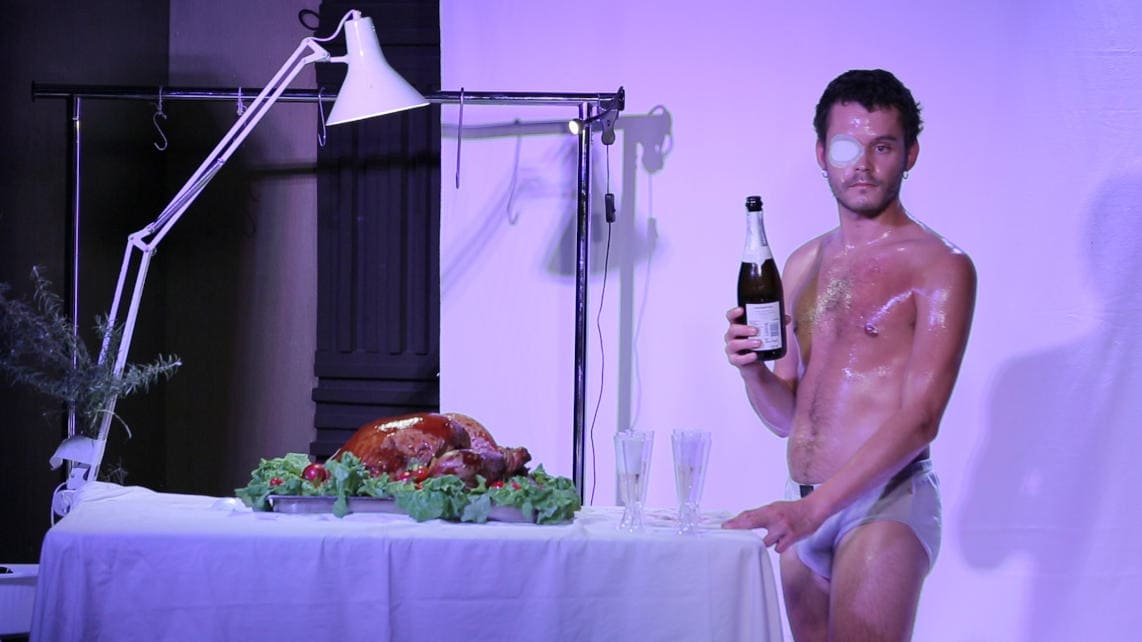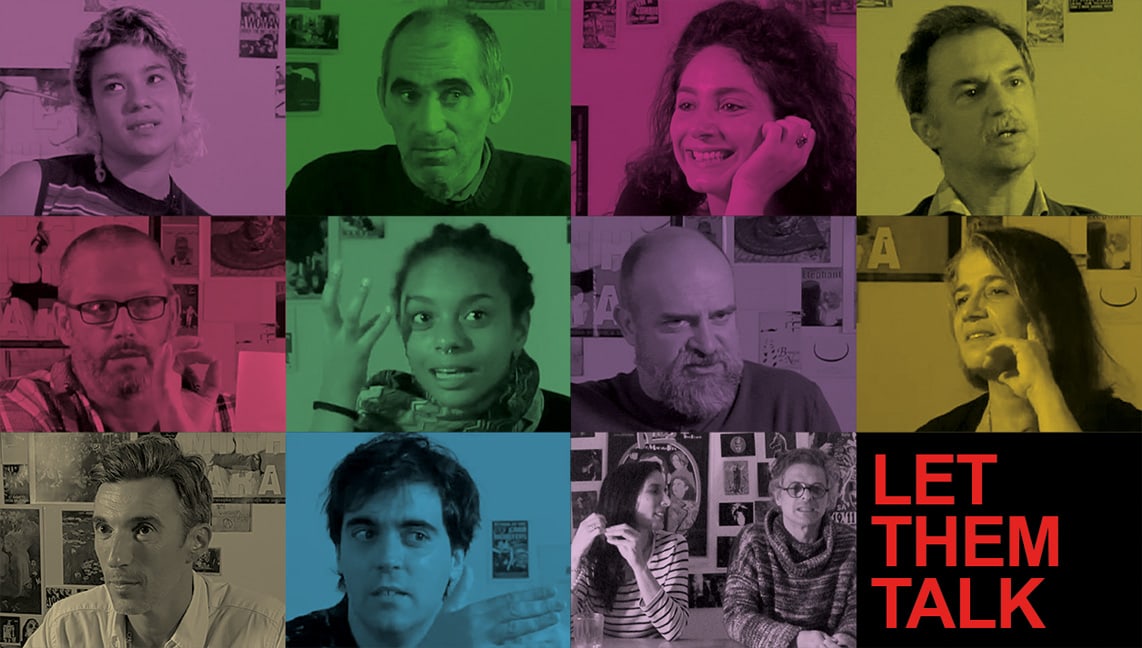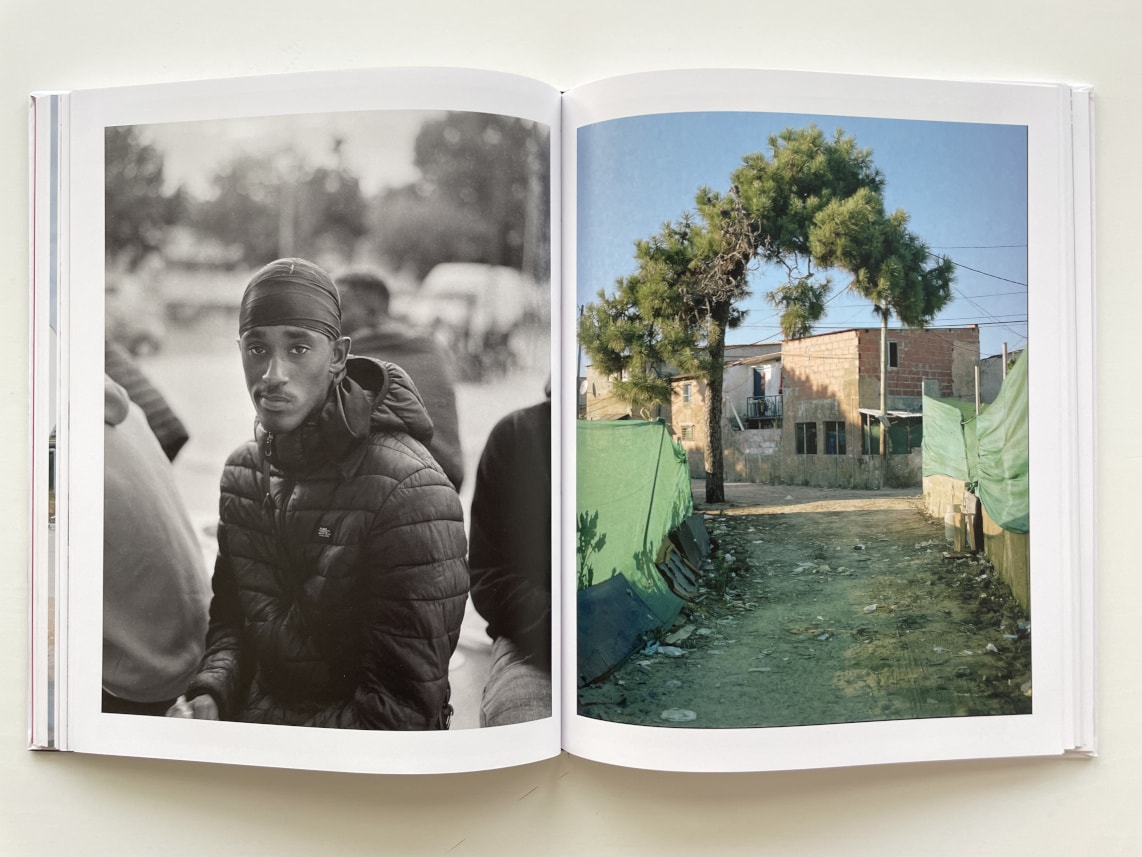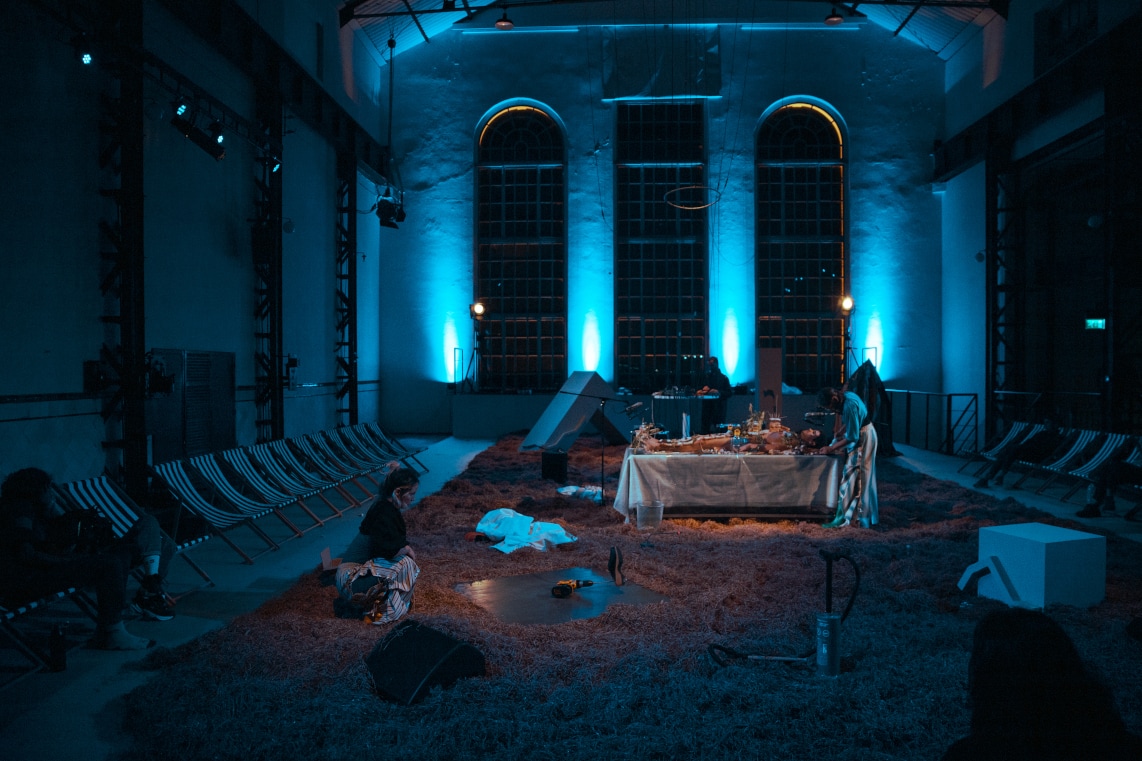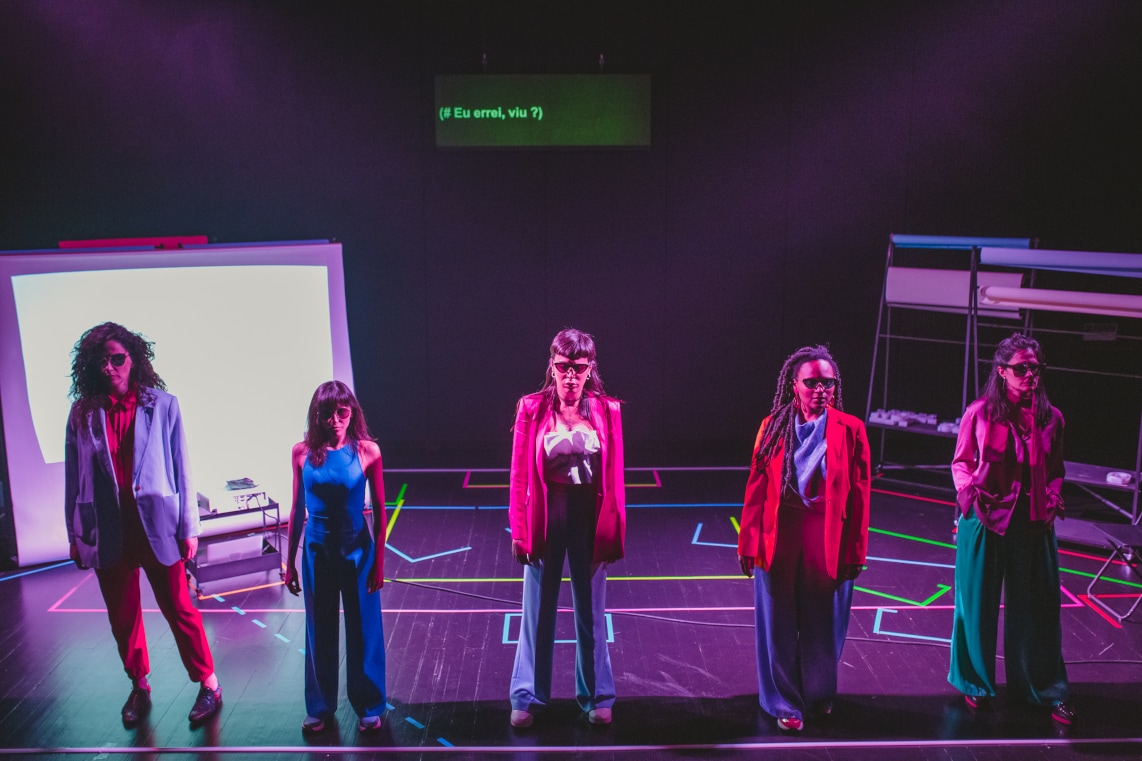Susto é um Mundo is the new brainchild of choreographer and dancer Vera Mantero. This show premiered in November at Culturgest, within the Festival Alkantara. The artistic direction is by Vera Mantero, the co-creation by Henrique Furtado Vieira, the interpretation by Vera Mantero, Henrique Furtado Vieira, João Bento, Paulo Quedas and Teresa Silva. The light design is by Leticia Skrycky, the sound design by João Bento, the set design by João Ferro Martins, the costume design by Marisa Escaleira and the assistance provided by Vera Santos. The research for the working process was done by Vânia Rovisco and the script is by Henrique Furtado Vieira, Paulo Quedas, Teresa Silva and Vera Mantero. The translation and subtitling is by Joana Frazão.
The plastic quality of the costumes and set design of this play situates us in a future place. This place belongs to a futuristic mood that represents a time to come. This does not happen with the robotization of the human, nor through the Matrix aesthetics that easily depicts our classical image of the future. On the contrary: all the presences have a highly human quality. The objects in the scene illustrate this idea of the future. Most of the objects on stage are moved by the performers from one side to the other, being re-dignified by these gestures. The interaction of the bodies and objects on stage creates images that draw a future constellation, a lunar field. These objects acquire new readings, such as the stepladder. The stepladder on stage is motionless, it serves its function of allowing one to climb, without ever being utilitarian: whoever climbs the stepladder does not do so in the expectation of performing another action afterwards. The plasticity of the set has a surrealist imagination. Surrealism was an artistic movement that tried to represent other states of consciousness. These states of consciousness were not an abstraction, but other senses and meanings, precisely what this performance seeks to do (in my view).
O Susto é um Mundo seeks contradiction and multiplicity. Contradiction and multiplicity have little room to tell us what we are supposed to live, think or act. The search for other senses and meanings is meant to show that contradiction and multiplicity are part of the way we live, think and act. Is an education for citizenship an education for Multiplicity and Contradiction? This is the show’s manifesto-question. The language specificities of this performance are in dialogue with the surrealist quality we have already mentioned. It is not an automatic writing or a weird corpse, but rather a logic with a different sense. This logic of meaning is somewhat confusing. Many things said are not clear, but we find a coherence in the way they are said and in the echo heard in the space and the interpreters. Many invented words are part of the speech, inventions that depend on phonetics: invented words are sounds that are born in succession in a harmonic melody. These words rhyme. Puns and tongue twisters are used. We can say that these writings are personal deliriums, fantasies and imaginary places between fiction and reality. This text’s discourse is narrated in the first person. A discourse that is concerned with the sequence of actions and with establishing continuity. We are not in the sheerest abstraction, we are where the raw and truthful description of things is illogically crossed with other things, leaving us in a place of doubt and interrogation.
Fascism, fanaticism and ecocide are this performance’s themes. These subjects mark directly or indirectly the texts of each performer and are probably the greatest threat to our planet (consequently, to us). The other common element in the texts is the dichotomy between you and me: one is the answer or complement of the other. This other is absent or omnipresent. These texts seem to be a commentary and reflection on the themes mentioned. A personal, intimate reflection, while the commentary is more general and sarcastic, or more political if we wish. The text concludes with a prophecy and an apparent farewell: Setting up the body-machine. Thank you. ‘m sorry. I forgive you. I love you. The bodies on stage often seem close to this image of body-machine. There is almost always a paradox between speech and corporeality in this play. Speech appeals to being, feeling, thinking, while corporeality often appeals to the machine, to mechanical and frantic movements. In several moments of the performance, the bodies come together to suggest a single image; that is, the bodies are part of and makers of a whole. An example is the moment of the performance where the performers’ bodies relate to a small plant and a yellow light. With the room dark, the bodies intertwine and merge into one: they become liquid. Even when the bodies are not in direct relation, they are under indirect relation. The moments in the play where not all the performers are on stage are rare. In other words, even when the action focuses on one body, the others are on stage, living their lives, in a constant relationship. The corporality in this show seems to underline this aspect: we are not a body alone; to face adverse conditions we must be together.
